
Have you ever been tempted to move your houseplants outdoors in spring? I must admit, the temptation was hard to resist for me about a decade ago when I first started keeping houseplants.
My thinking was that, with the onset of higher temperatures and the return to longer days, my houseplants would benefit from better light conditions and higher humidity if they were residing outdoors.
And I was right, up to a point.
What didn’t go so well, however, was my execution of this plan – namely, just moving the plants outdoors and letting them fend for themselves.
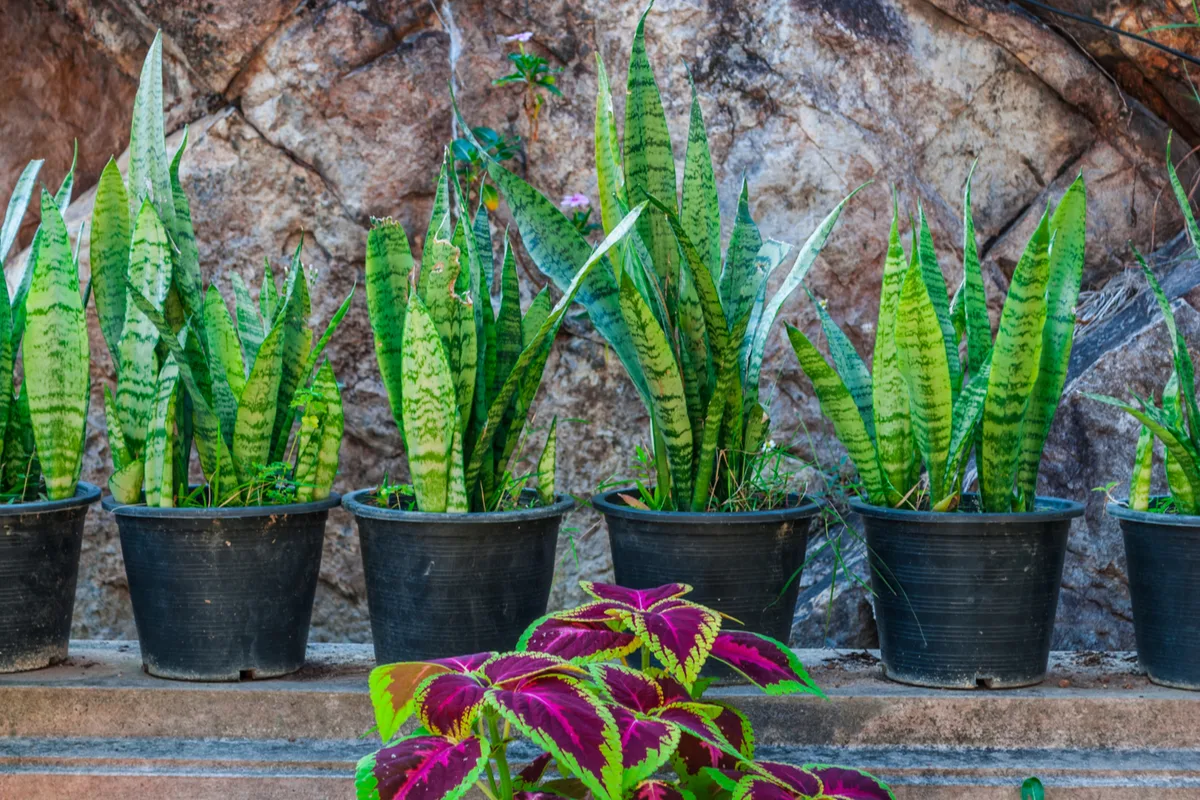
Alas, I have come a long way and learned a few things on my journey to keeping my plants alive – with how to move houseplants outdoors being at the top of the “lessons learned” list.
Here are my top tips for keeping your plants (and yourself) happy while you transition them from the shelter of your home to your outdoor spaces
1. Timing is key when moving your plants.
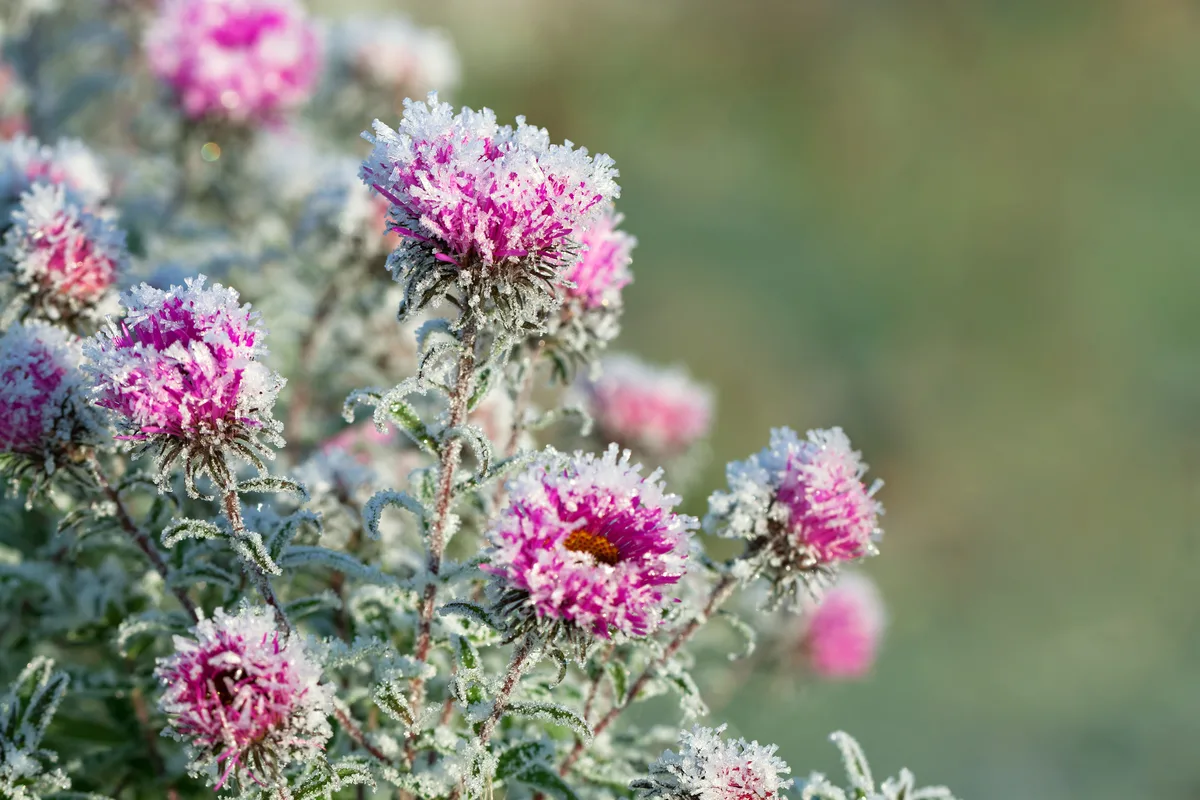
So when should we move our plants outdoors?
As expected, the answer is: it depends on a few variables.
First of all, check when the last predicted frost in your area is supposed to be. You should wait at least three weeks after the last frost before you move your plants.
This is not a hard-and-fast rule, as you have to keep in mind that the majority of what we call houseplants nowadays are actually tropical plants, in their natural habitat. So even though your temperature may be well above freezing during the day, temperatures dipping below 50F (10C) at night might represent a problem for your plants.
It should be safe to move your plants outdoors when the fluctuation in temperature between day and night is not too extreme. For temperate climates, that’s usually from June through September, but please play it safe and adjust according to your own gardening zone.
In some climates, days can be mild and pleasant, while nights get too cold. Most houseplants like the predictability of a constant temperature, so sudden changes may cause them to go into shock and drop some leaves in protest.
The second factor that makes a big difference is the type of houseplants we’re talking about.
Some houseplants, such as coleus, caladiums and begonias, may be perfectly happy as both indoor and outdoor decor, depending on the season. But we should think of them more as outdoor plants that have adapted to overwintering indoors, rather than houseplants that thrive out in the elements.
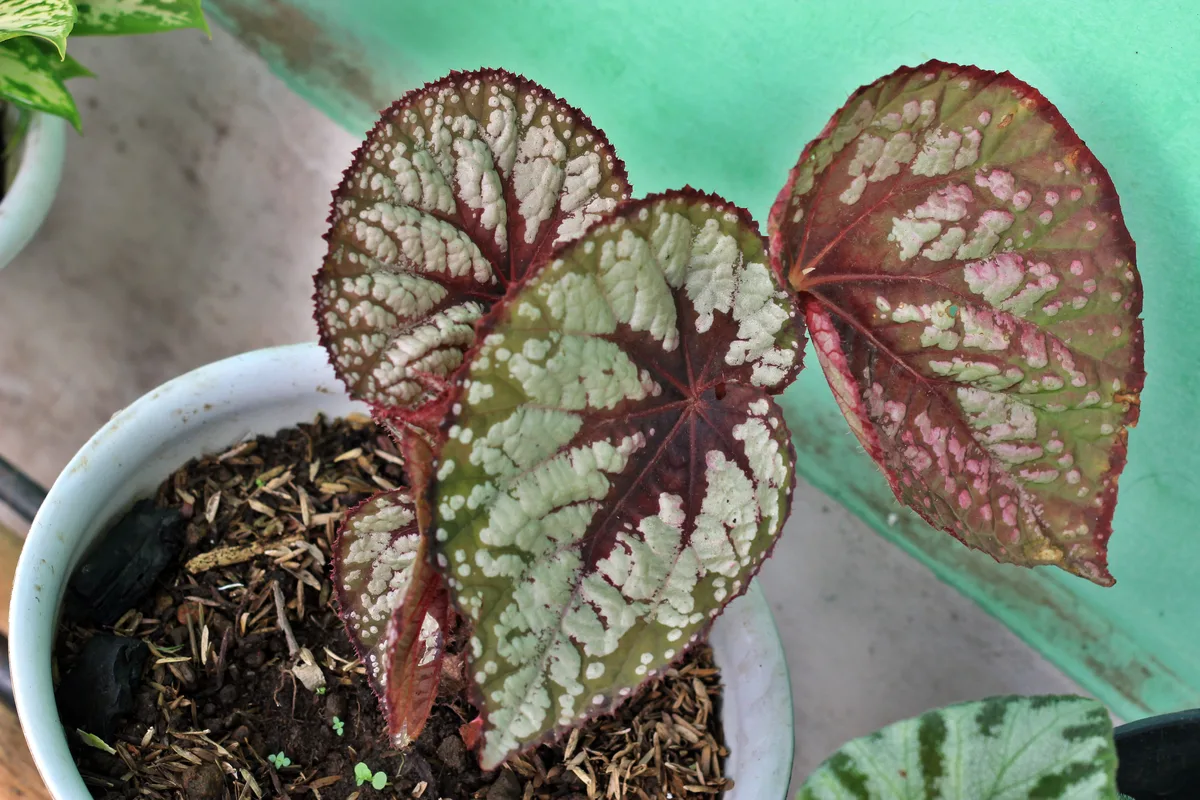
Plants such as succulents and cacti are naturally hardy and can be moved outdoors without causing too much of a fuss.
However, plants such as fiddle-leaf figs and pilea peperomioides are very sensitive to constant changes in temperature, humidity and light and are best kept indoors later into the season
2. Acclimation is (also) key.
If you happen to be into gardening, you’re probably already familiar with the importance of hardening off your seedlings before they start their full-time life outside, in the garden.
Just as you wouldn’t just stick your tray of seed starters outdoors and wish them good luck, you wouldn’t want to subject your houseplants to this kind of treatment either.
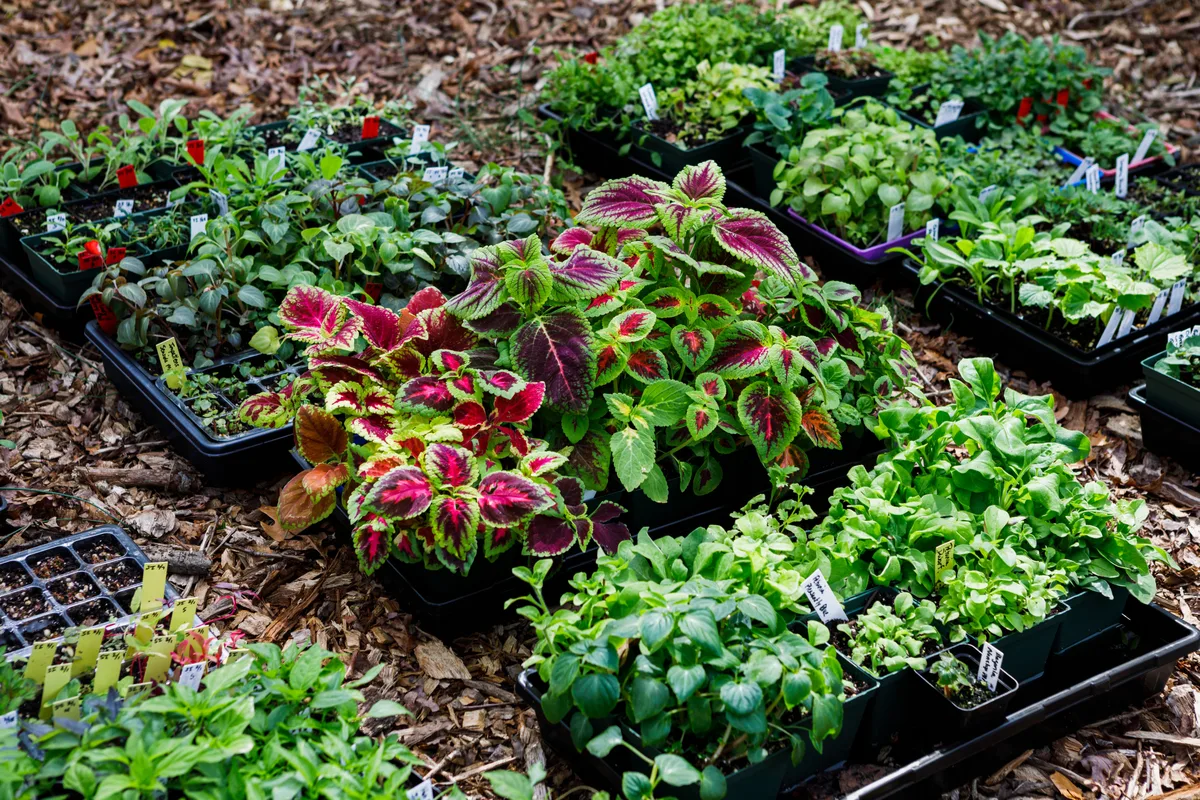
Before you relocate your plants outdoors for the summer, make sure you give them a chance to acclimate to the temperature, humidity, light intensity and wind conditions outside.
This doesn’t have to be a complicated process. Simply take your plants outside for a few hours every day when the temperature is constant, and take them back indoors before the weather gets cooler in the evening. Do this for a couple of weeks and observe how your plants react to the change. Adjust accordingly and only move out the houseplants that seem happy with this arrangement.
3. Find a spot with bright indirect light.
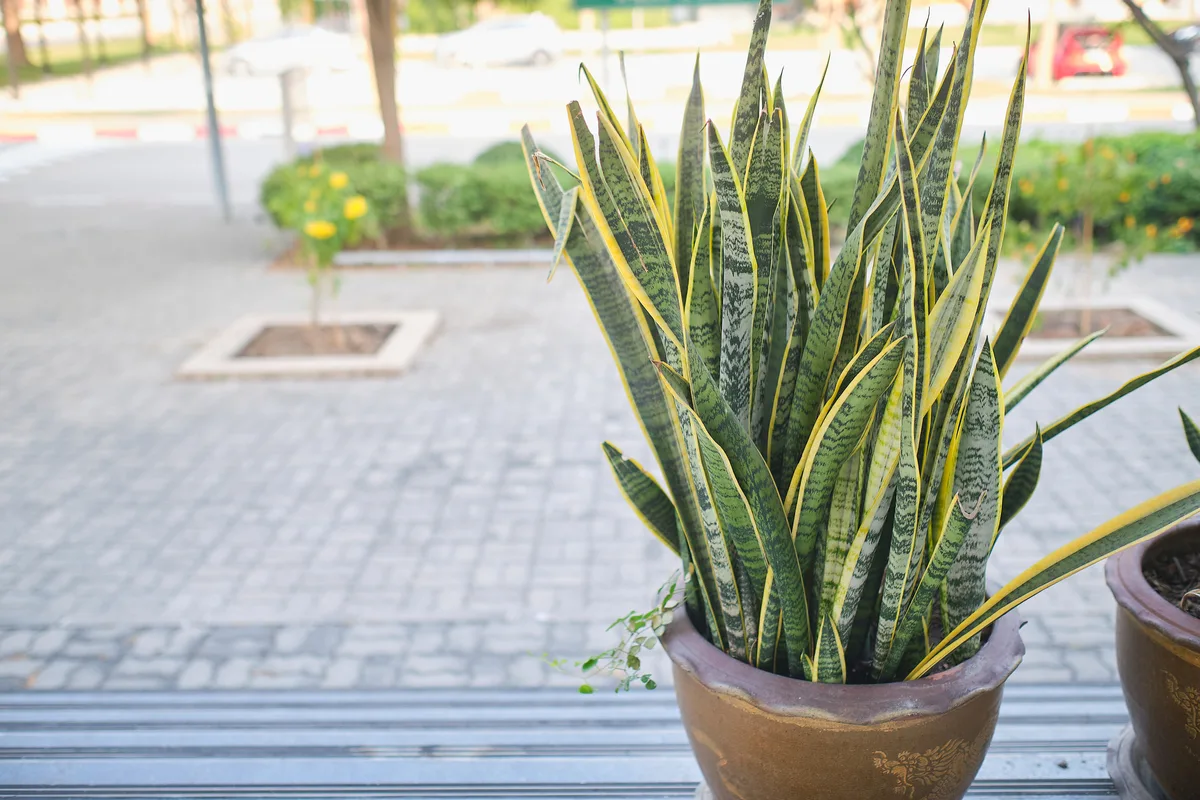
Again, we’re not talking about succulents and cacti here, but about the tropical plants that we’ve come to call houseplants nowadays.
In their natural habitat, most houseplants are undergrowth, shielded from the intensity of direct sun by the canopy of taller trees. That means they don’t spend hours under the bright rays of the sun every day.
Most plants will do well in bright indirect light (by the way, bright refers to the intensity of the light, while indirect refers to the direction of the light). In the Northern Hemisphere, bright indirect light is usually found in west-facing and east-facing locations, in spots such as your porch, under an awning, shielded by a pergola or on a covered windowsill.
Keep in mind that too much direct sunlight may cause leaf damage. The telltale signs of too much sun exposure can look like bleached, curling or crispy brown leaves. If your plant is getting too much heat energy from the sun, often the edges of the leaves will become singed and plagued with dark patches.
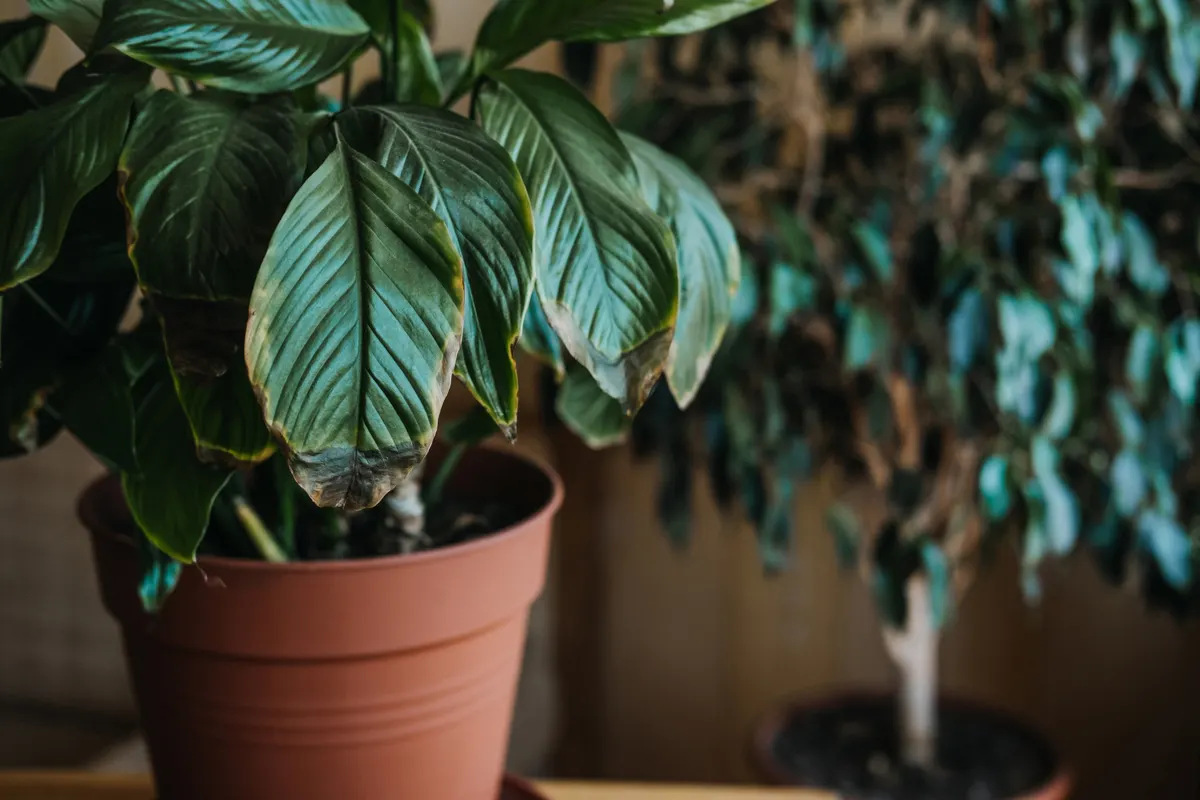
Think about it this way, if you were to get sunburned while sitting in the same spot, so would your plant. If this piece of advice came too late, move your plant out of direct sun and remove any leaves that may have been affected. Once a leaf is damaged, it will not turn green again, so gently pinch it off to redirect the plant’s energy back to new growth.
4. Beware of direct rainfall.
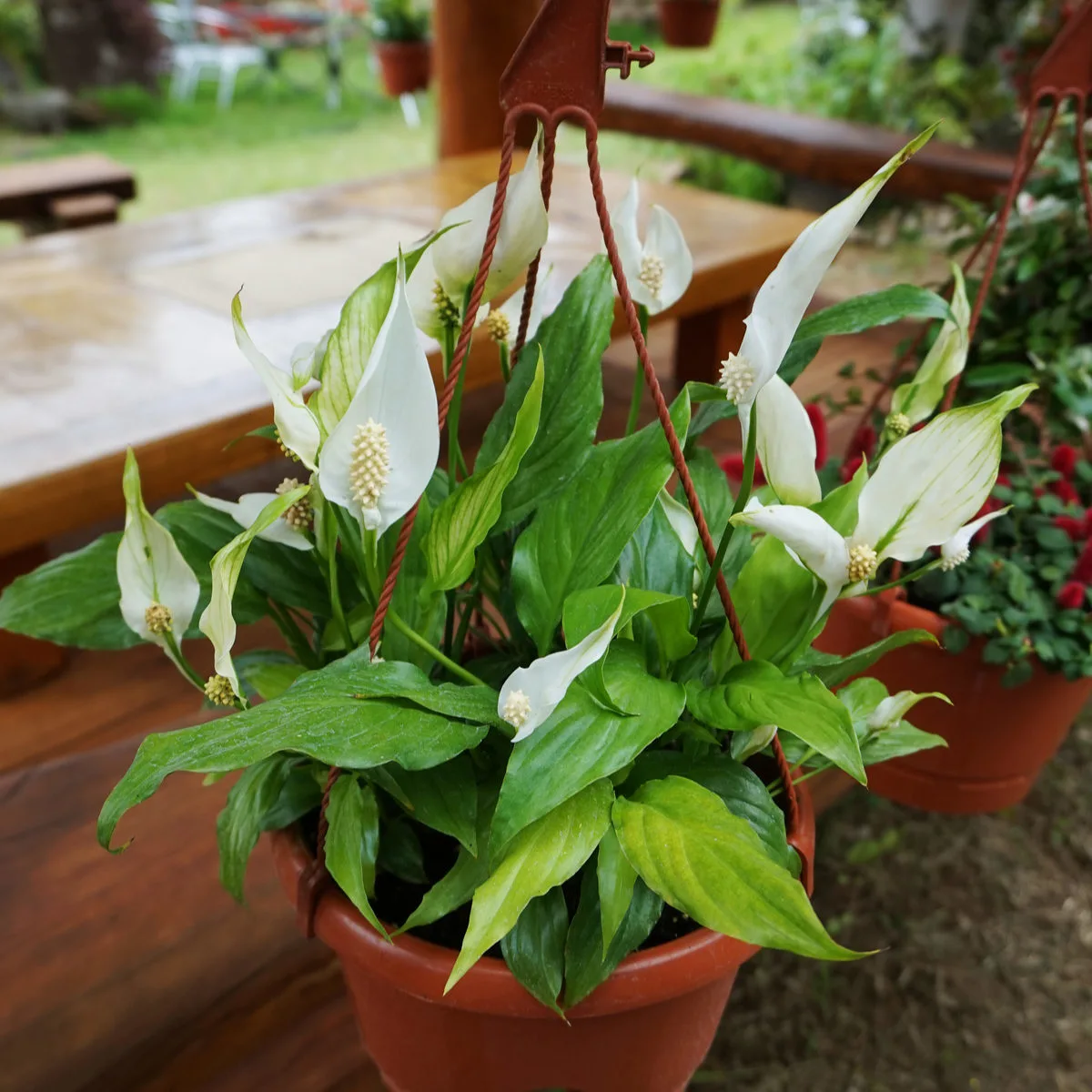
One of the most common mistakes that people make when moving their plants outdoors is assuming that rain will take care of all the plant’s watering needs. After all, plants in the garden do just fine in the rain, right? But it’s not the same thing. Houseplants are confined to an artificial environment (a pot or a planter) that doesn’t even come close to mimicking the conditions of plants that are placed straight in the ground.
In this latter case, the water has enough room for redistribution in the soil. While in the case of potted houseplants, too much water will lead to soggy roots that will invariably lead to root rot. And remember, there’s no recovering from root rot – once a plant loses the function of its roots, its days are numbered.
Another reason that makes the case against leaving your houseplants out in the rain is the fact that heavy rainfall will damage the surface of the leaves. Some plants (such as ponytail palms) may be wispy enough to withstand this, but most plants won’t.
Also, make sure to protect your houseplants from wind and direct drafts by placing them against a wall or a fence rather than out in the open.
5. Do a regular pest inspection.
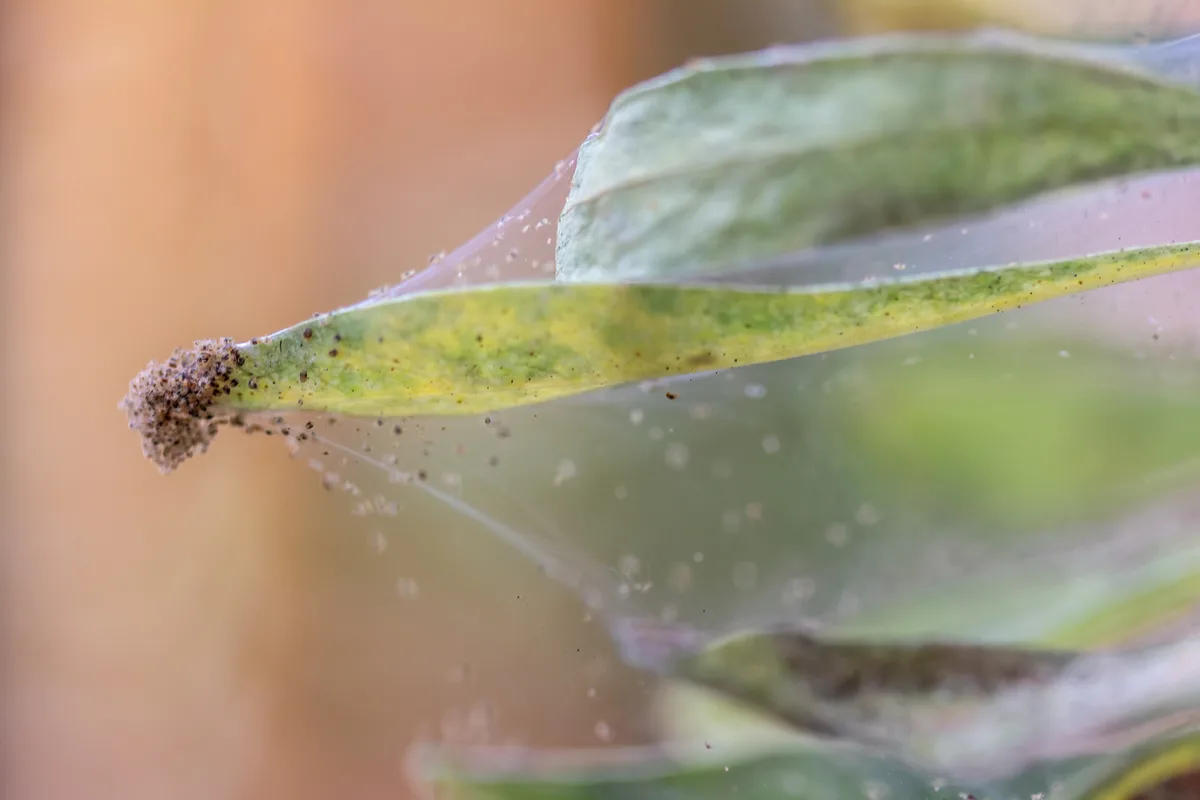
If you think you’ve seen the worst of what a houseplant pest infestation looks like, wait till you get your indoor plants into the great outdoors.
Infestation happens gradually, and it may take days or even weeks before the damage becomes visible. Don’t fall into trap of the “out of sight, out of mind” mindset.
That’s why you should make it a habit to check for pests (aphids, mealybugs, whiteflies, thrips) every week. Inspect both the surface and the underside of the leaves, the surface of the soil and along the stems.
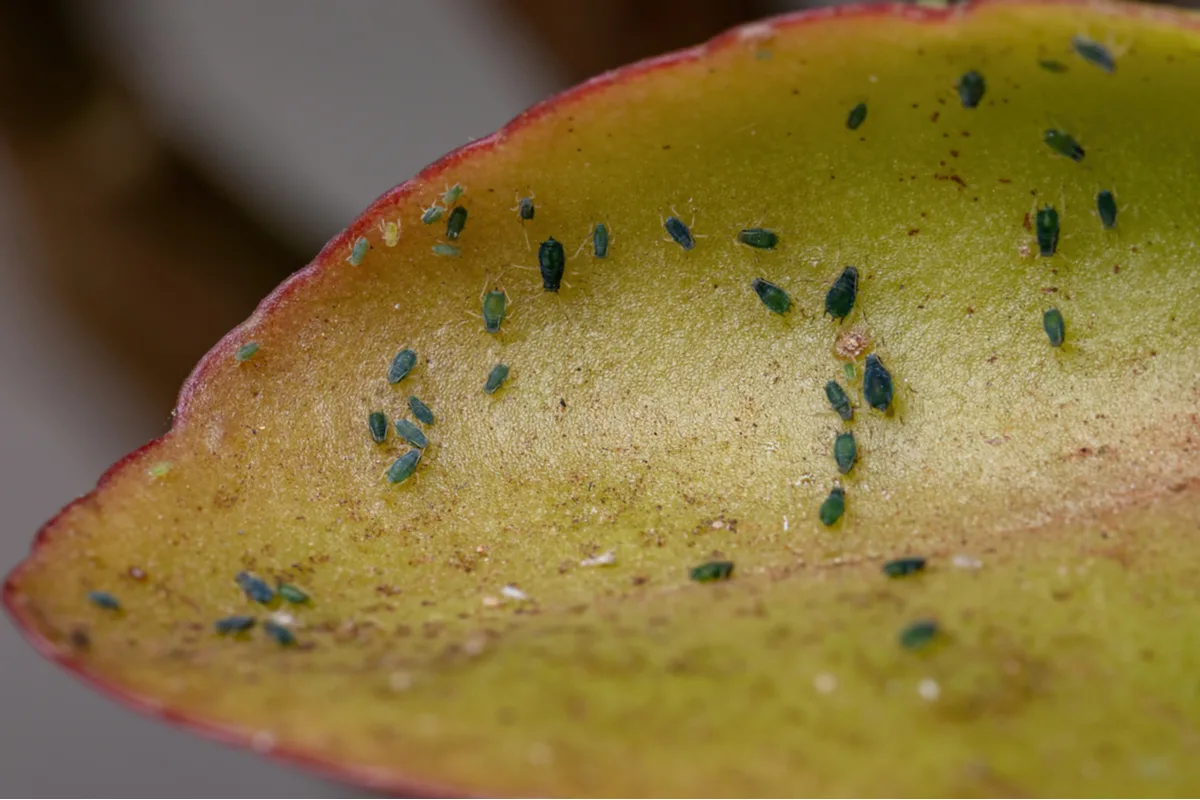
If you happen to find unwanted guests on your outdoor houseplants, do not move the plant back indoors before fixing this issue, unless you want the hitchhikers to spread like wildfire and affect every bit of living decor indoors.
Most houseplants are prima donnas, so we recommend that you move them outdoors only if the conditions above are met. And a good rule of thumb is to always observe your plants reaction closely and adjust accordingly.
Oh, and always take notes that you can refer back to the following year.

Get the famous Rural Sprout newsletter delivered to your inbox.
Including Sunday ramblings from our editor, Tracey, as well as “What’s Up Wednesday” our roundup of what’s in season and new article updates and alerts.

